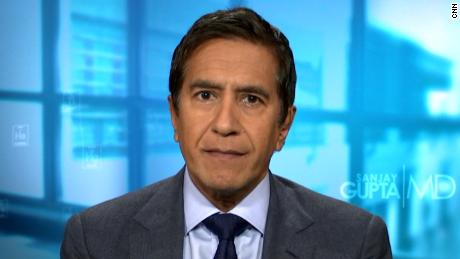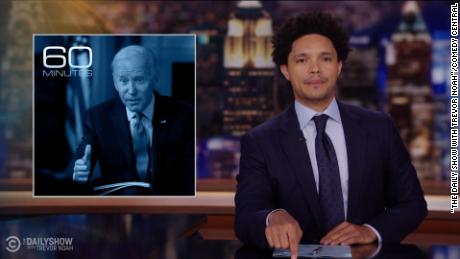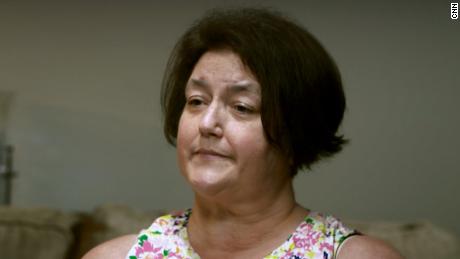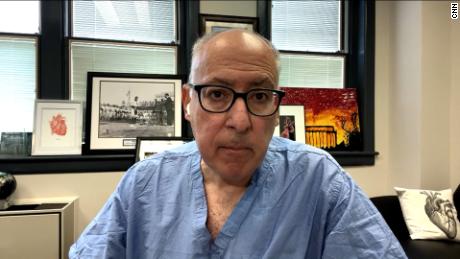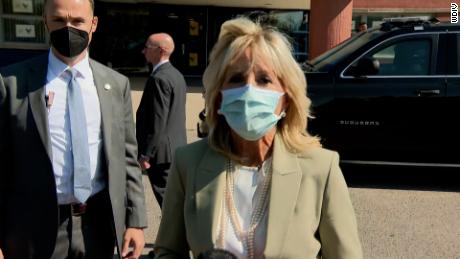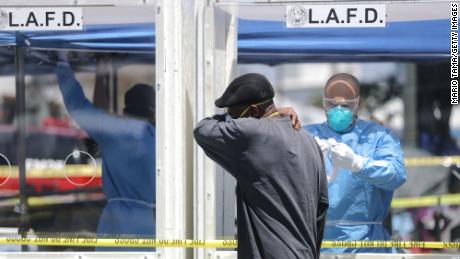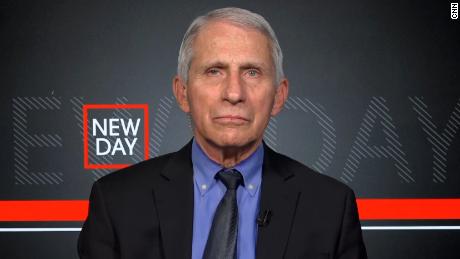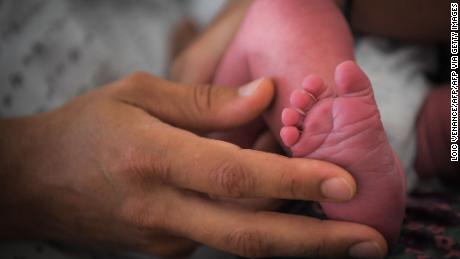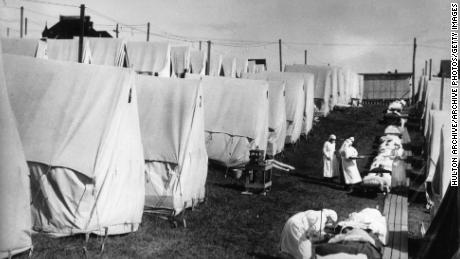(CNN)It's a topic of speculation every time a disaster hits.
Will we see a "baby boom" nine months later, since so many couples are cooped up inside with nowhere to go?┬Ā
Sure, this kind of trend has been reported before. But demographers think it's unlikely to occur this time around.
In fact, they say the United States will probably see the number of births decrease. And other notable population shifts are likely as well.
"There's no way that the number of births is going to go up," says Kenneth Johnson, a professor of sociology and demographer at the University of New Hampshire. "This is not the kind of environment in which people say, 'Let's bring a child into the world now.'"
Even before the pandemic hit, demographers say a combination of factors -- fewer births, more deaths and less immigration -- were already creating a "perfect storm" slowing the nation's population growth.┬Ā
Add to that the changes coronavirus is expected to bring on all these fronts, and that storm is only going to intensify.┬Ā
One major reason a baby boom isn't likely: the economy
Financial uncertainty often makes people postpone -- or even forgo -- decisions to have children.
Case in point: the aftermath of the Great Recession, the economic downturn that begin in late 2007.
"Fertility dropped substantially. That's not unusual. That often happens during difficult economic times," Johnson says.
But what is surprising, Johnson says, is that since then, the birth rate hasn't bounced back. It's been declining ever since.┬Ā
And demographers say the uncertainty fueled by the novel coronavirus pandemic isn't going to make matters any better.┬Ā┬Ā
This disaster isn't the same as a blackout or hurricane, says Rogelio S├Īenz, a professor in the Department of Demography at the University of Texas at San Antonio.
"Those┬Āare short-term kinds of things that take place. This is going to be a drastically long kind of event, and also with the economic impacts. ... Economic uncertainty really impacts fertility," he said. "This is likely to lead to even further drops in fertility and births as well."
Last year there were┬Ā3.79 million births in the United States, the lowest number since 1986.
Last year more people than ever died in the US
While births are decreasing, the number of people dying in the United States is on the rise. Last year the number of deaths hit a record high of 2.83 million.
"That's┬Āprimarily because the population is getting older," Johnson says. "The mortality rate of older people is getting higher."
Here's why these numbers are important to keep an eye on:
When there are more births than deaths, the difference between those two numbers is known as the "natural increase" of the population. When there are more deaths than births, it's know as "natural decrease." Overall the US population is still experiencing "natural increase," but barely.
If the number of deaths start to outpace the number of births, societal strain can follow. Imagine a growing number of people retiring, but fewer young people in the workforce, or a growing number of elderly without enough people to care for them.
And already, the US is closer than ever to that happening.
Recently released government data shows the country's population growth rate is the lowest it's been in more than a century.┬ĀIt was just .48% last year, the lowest it's been since 1919, the last time a pandemic hit.┬ĀApproximately 675,000 people in the United States died as a result of the influenza pandemic.
As Johnson pointed out in a recent analysis of Census data, first reported by the New York Times, in nearly half of the country's counties more people died than were born last year. And nationwide the gap between the number of people who died and the number of people who were born was smaller than it's been in decades.
Now factor in coronavirus.
White House officials shared a dire message this week, telling Americans they should be prepared for 100,000-240,000 people to die nationwide as a result of the pandemic.┬Ā
Some experts --┬Āincluding CNN Chief Medical Correspondent Dr. Sanjay Gupta┬Ā-- have warned the death toll could end up being higher, given that social distancing orders aren't yet in place everywhere in the US.
What will this mean for the US population growth rate? Demographers say it's too soon to say.
"It could certainly be the lowest growth rate in US history," Johnson says.
If the death toll does end up being higher than the White House model┬Āpredicts, the United States could experience something that's never happened before: a year-to-year decline in its population.┬Ā
"There's potential for population loss over the coming year," S├Īenz says.┬Ā
William Frey, a senior fellow at the Brookings Institution, says the past decade is already on pace to be the slowest for population growth in US history. But he doesn't think the coronavirus will move the needle as much when it comes to overall population numbers.
"I wouldn't go so far as to say that this Covid-19 is going to make us become a declining population. I think that's a shorter-term thing and things will sort of bounce back," he says. "We'll have the normal death rates going forward. There will be some shorter-term shifts in the population."
Immigration had already plummeted. Then borders closed around the world
When the population's natural growth rate slows, immigration historically has made up the difference.┬ĀBut that, too, is declining.
From July 2018 to July 2019, immigration in the United States fell to a net gain of around 595,000 people, Frey says. Compare that to a few years ago, when it was close to a million.┬Ā
"This is by far the lowest year we've seen for immigration since at least the '90s," he┬Āsays.
And given that coronavirus fears have fueled unprecedented efforts by countries around the world to close their borders and impose travel restrictions, we're not likely to see an uptick anytime soon.
Frey says he expects immigration to climb again, though it's not clear when.
"Really, immigration is kind of our only hope to keep things sort of stable. ... Immigration can make a difference and it has made a difference," he says. "Immigrants and their children are younger than the rest of the population. Latinos and other minorities make up more than half of the births in the United States."
So amid all this uncertainty, what happens next with births in the US is important -- even though a coronavirus baby boom isn't likely.


